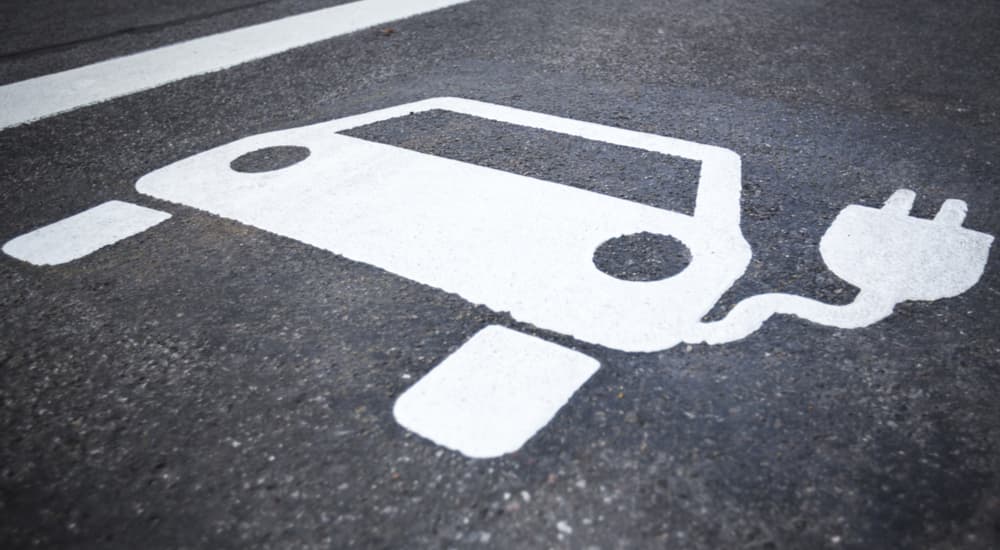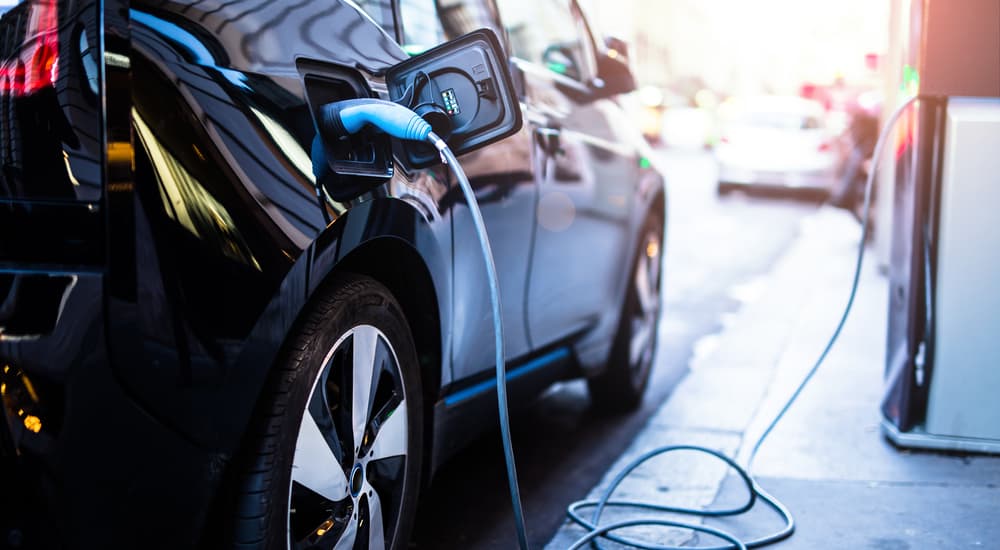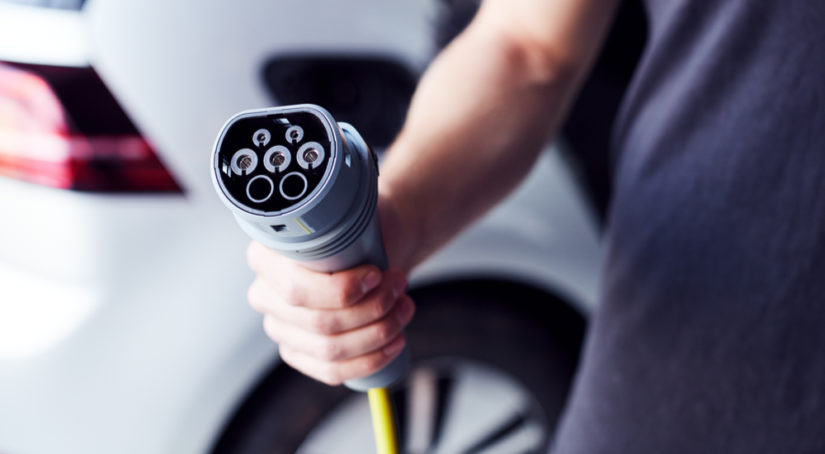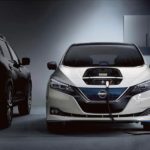There are lots of misconceptions about EVs: they don’t have enough range, they’re more expensive than gas models, and they’re slow. But the more drivers actually get behind the wheel of these next-generation vehicles, the more the truth starts to emerge. Take just one example: a 2020 Ipsos survey found that despite the fact that the average American drives less than 170 miles per week and the average EV has a range of 194 miles, 45 percent of drivers believed that they’d need to charge their vehicle once or more per day. As the technology continues to take hold and the infrastructure around the vehicles continues to develop, drivers are finally getting a chance to put those misconceptions to rest, but one big question still remains. How long will electric cars last?
In theory, an electric car will last just as long as its conventionally powered counterpart as the only real difference between the two comes down to their powertrains. However, in many cases, EVs actually outperform the old technology altogether. Let’s look into how EVs are built, explore some of the science behind their lithium-ion batteries, and learn why concerns around their service life are largely unfounded. By the end, you might just be searching for an “EV dealership near me!”
Keep it Simple
One of the biggest benefits of EVs has to do with the vehicles’ electric motors, which are far simpler than the gas-powered engine found on traditional internal combustion engine (ICE) vehicles. Gas engines have served mankind well for over 100 years, but the more you look into them compared to today’s EVs, they’re almost laughably complex. Case in point: a typical ICE has over 2,000 moving parts, whereas many of the electric motors on today’s EVs get by with as few as 20. That’s just 1% of the components found in an ICE engine, meaning there are 100 times fewer parts that can break down, wear out, or otherwise require costly repair. The upfront cost of EV ownership might still be higher than the average ICE vehicle, but once you factor in the potential repair costs, EVs start looking like a better investment all the time.
There are four major components that differentiate an EV from an ICE vehicle: the lithium-ion battery, the electric motor, the regenerative braking system, and the charging port. Aside from these four elements, an EV may be virtually indistinguishable from a normal gas-powered vehicle and, as such, requires much of the same maintenance in order to operate at its best. EVs do still need regular tire rotations, cabin air filters, windshield wipers, and in some cases, transmission fluid. However, some tasks like replacing brake pads are a little less vital on EVs owing to the fact that the vehicle’s regenerative braking means less wear and tear on the pads.
Then there are the maintenance tasks you can forget about altogether. Owing to the absence of a traditional powertrain, EVs don’t require regular engine tune-ups, oil changes, spark plugs, or drive belt replacement. This might not sound like much, but studies have found that over the life of an EV, lower maintenance and fuel costs can amount to as much as $15,000.
All these factors add up to a promising lifespan for today’s EVs. To some extent, it’s a little too early to be making predictions about how long EVs will last. The first mass-produced hybrid electric vehicle, the Toyota Prius, only debuted in 2000, giving us just 22 years of history to look back on when it comes to electrified cars. While this is too short of a time to draw any concrete conclusions about the potential long-term lifespan of today’s EVs, the early results look promising, with one well-documented Tesla already reaching the 1,000,000-mile mark.

Juiced Up
A lot of the reticence around EV ownership has to do with the battery pack. Like all batteries, the lithium-ion cells that power today’s EVs do have a certain shelf life, but concerns about their longevity are often a little overstated. A study by Consumer Reports found that the average EV battery has a lifespan of around 200,000 miles, rivaling ICE engines in terms of longevity. In fact, the Federal Highway Administration found that the average ICE vehicle driving an average of 10,200 miles per year would last on average between 10 to 15 years or some 150,000 miles. By this metric, EVs might actually offer a longer service life than their gas-powered cousins, adding to their already considerable value proposition.
Of course, when an EV’s battery does stop working, it can be expensive to replace, with a typical Prius battery replacement costing around $4,000. Lithium-ion batteries are typically one of the highest ticket items in an electric vehicle, accounting for as much as 35 percent of the total cost. The cost currently seems prohibitive for some drivers, but as the technology continues to evolve, prices should follow suit.
When it comes to EV battery prices, automakers have come a long way over the last decade. As recently as 2013, the price per kilowatt-hour (kWh) for a vehicle-sized lithium-ion battery was upwards of $684. That was halved in just three years, reaching an average of $303 in 2016, and has since come all the way down to $132 in late 2021. Analysts now predict that the industry will hit the all-important sub-$100 per kWh mark by 2024, but there’s still room for improvement. A study by the United States Department of Energy estimates that in order for EVs to become just as cost-effective as traditional gas-powered vehicles, batteries will have to reach the $60/per kWh range.
Some brands are being more proactive about reducing battery costs and increasing lifespan in a bid to become the market’s go-to EV producer. Toyota, for example, has launched a $13.5 billion battery development program with the goal of reducing battery costs by 50 percent by 2030. The Japanese automaker is taking a double-edged approach when it comes to EV efficiency, simultaneously addressing battery cost while also working on new models that consume less electricity in the first place. Toyota’s new bZ4x electric crossover will serve as the litmus test, with the automaker aiming to produce a vehicle that will use 30 percent less electricity per mile. The $13.5 billion effort also includes a focus on battery degradation, with Toyota aiming to limit degradation to just 10 percent over the first 10 years of a battery’s service life.
How to Extend an EV’s Life
How do you make sure your EV lasts as long as possible? In many ways, it’s not too different from how you would approach a normal vehicle, with some notable exceptions.
Follow the Maintenance Schedule
As we mentioned, EVs don’t require many of the same maintenance tasks as an ICE vehicle, but that doesn’t mean they can be neglected entirely. Make sure to stick to the maintenance schedule found in your vehicle’s manual, especially if you’re trying to keep the vehicle under warranty, and quickly address any problems that might arise before they can balloon into big-ticket repairs.
Drive Smarter, Not Harder
Putting the pedal to the metal can be a lot of fun, but it can also prematurely age your EV. Try to keep the vehicle at a steady pace and try to get a good feel for how your EV wants to roll. For example: keeping your foot on the accelerator is a good way to get somewhere in a hurry, but since most EVs feature regenerative braking, you could actually be compromising your range by refusing to let the system kick in.
Avoid DC Fast Charging
Fast Charging is great when you need it but can decimate battery life over the long haul. The Level 2 charging available in most home charging systems represents the real sweet spot of charging time vs battery life and is generally less expensive to boot. This is especially true in colder temperatures, so plan your drives accordingly and avoid Fast Charging whenever possible.

Develop Good Charging Habits
While it’s tempting to top off your EV to 100 percent whenever possible, this actually puts a real strain on the cell. Just like laptops, cellphones, and other lithium-ion-powered devices, an EV’s ideal charging window is between 20 and 80 percent. That means you should never let a lithium-ion battery get below 20 percent and should only charge it above 80 percent when heading on a long road trip.
Avoid Extreme Temperatures
Temperature extremes are bad for your EV, but in different ways. Cold weather can rob a battery of range quite rapidly, losing as much as 40 percent of your total miles when the thermometer starts to drop. This is because EV cabin heating systems rely on battery power rather than excess engine heat. High temperatures are detrimental to the battery in the long term, potentially reducing its overall service life. Most EVs include thermal management systems that will keep the battery from overheating, but these have the side effect of draining battery power in the short term.
An EV Is a Long-Term Investment
With a little research, patience, and regular maintenance, there’s no reason an EV shouldn’t last just as long as the average ICE vehicle. Sure, it might need a battery replacement somewhere down the line, but as lithium-ion battery prices continue to fall and research continues on new battery technology, that’s not the impediment it once was. While they might require a little getting used to in terms of developing good charging habits and planning for longer trips, that’s also being addressed by a growing network of charging stations and in-home power solutions.
Switching to an EV may require a little more thought on a day-to-day basis, but it more than makes up for it when it comes to cost savings over the life of the vehicle. More than that, EVs allow drivers to untether themselves from the constantly fluctuating gas prices than can make owning a traditional vehicle such a hassle, all while greening the planet for the generations to come.



